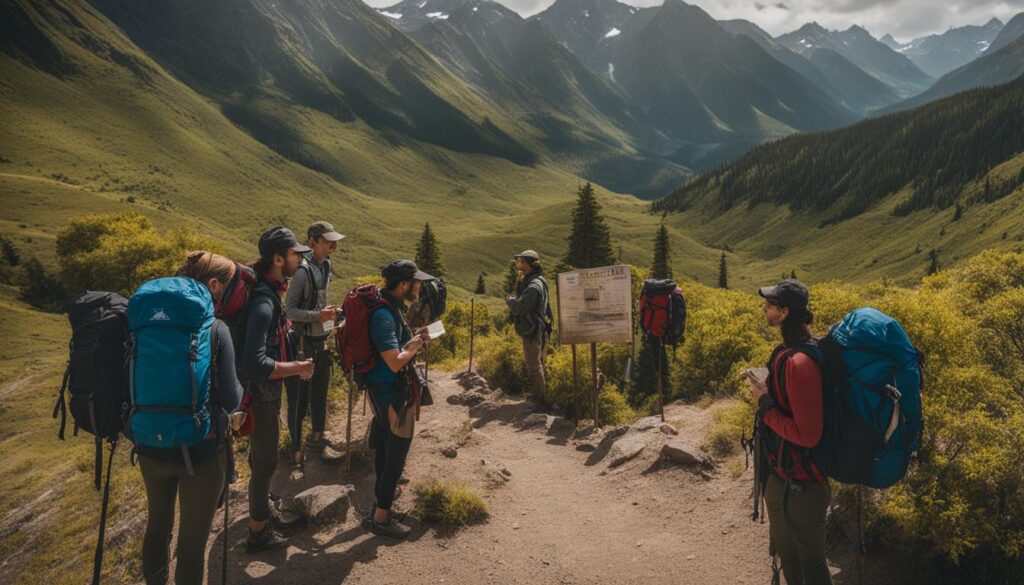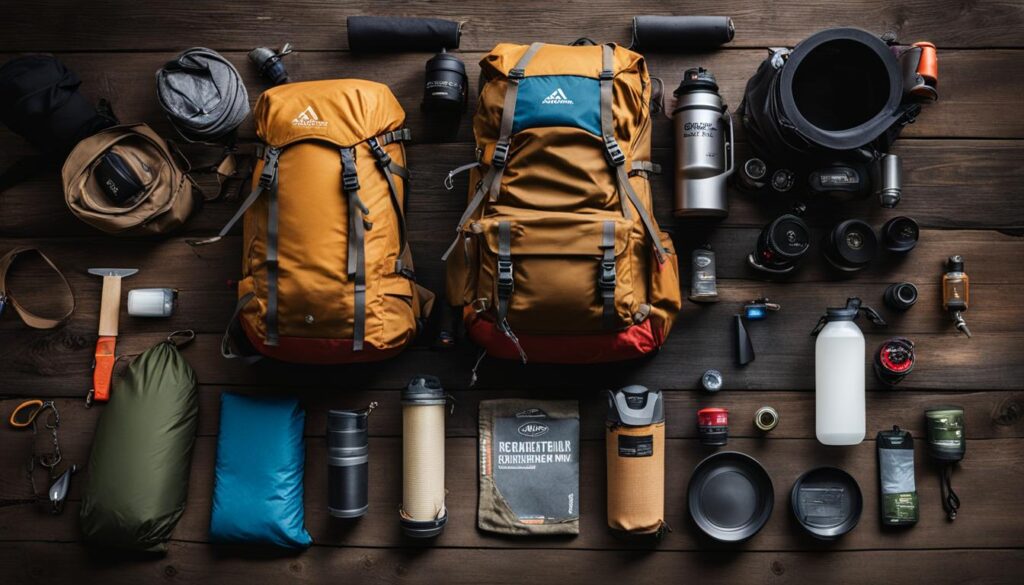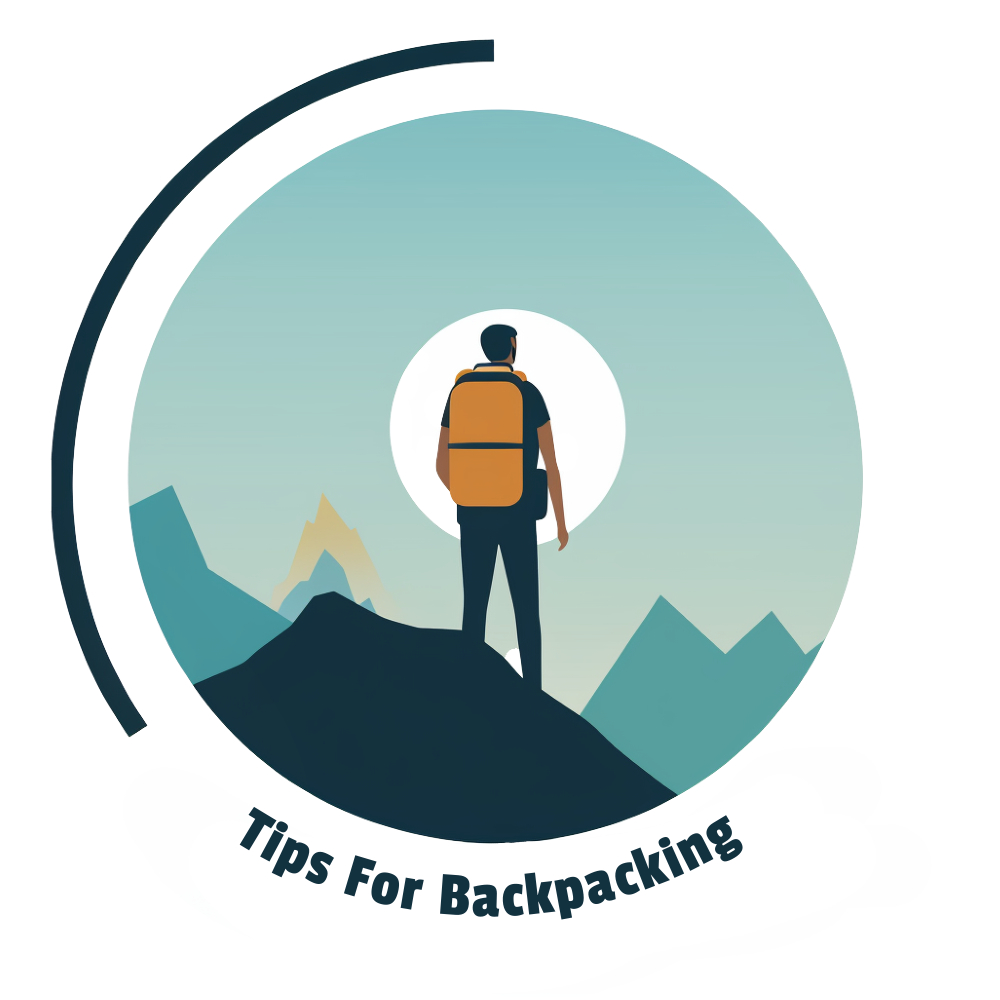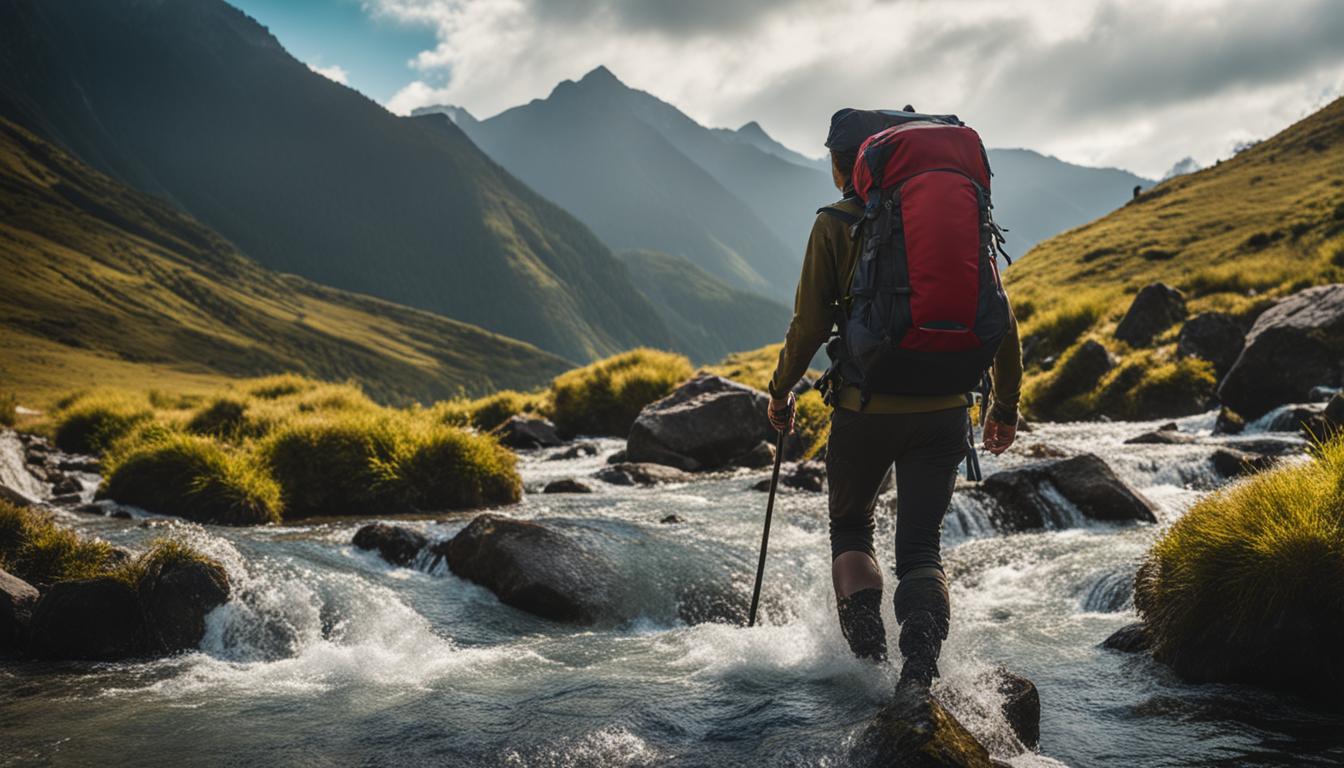Backpacking is an incredible way to connect with nature and explore the great outdoors. Whether you’re a beginner hiker or have some experience under your belt, there are important lessons to learn that will enhance your backpacking journey. From finding a hiking partner to selecting the right gear, these key lessons will ensure you have a safe and enjoyable trek.
When it comes to finding a hiking partner, it’s always a good idea to have someone by your side. Not only does it provide companionship, but it also promotes safety and allows for guidance from experienced hikers. If going solo is your only option, start with shorter trips to popular hiking destinations and always inform someone about your plans.
Choosing the right hike is crucial for a successful backpacking experience. Consider factors such as time, fitness level, distance, elevation gain, and weather conditions when selecting a trail. Guidebooks, websites, recommendations from friends, and local hiking organizations can provide valuable information to help you make an informed decision.
Equipping yourself with the right gear is essential. The Ten Essentials, which include navigation tools, sun protection, insulation, illumination, first aid, fire, repair tools, nutrition, hydration, and emergency shelter, should always be with you on the trail. Additionally, investing in comfortable hiking footwear and clothing made of quick-drying, moisture-wicking fabrics will keep you comfortable throughout your journey.
Remember, backpacking is not just about the physical aspects; it’s also about personal health and safety. Learn basic outdoor survival skills such as problem-solving, navigation, and practicing good bathroom etiquette. Embracing gratitude for the kindness of others is also an important lesson that applies to both hiking and life in general.
Key Takeaways:
- Find a hiking partner or embrace the experience of hiking alone.
- Choose the right hike based on your time, fitness level, distance, and weather conditions.
- Carry the Ten Essentials and invest in proper hiking footwear and clothing.
- Learn outdoor survival skills and practice good bathroom etiquette.
- Be grateful for the kindness of others and approach backpacking with a positive attitude.
Finding a Hiking Partner and Choosing the Right Hike

Finding a hiking partner can greatly enhance your hiking experience. Not only does it provide added safety and companionship, but it also allows you to learn from experienced hikers. There are several ways to find a hiking partner. You can ask friends or family members who enjoy hiking, join local hiking clubs or organizations, or connect with fellow hikers through online communities and forums. By finding a hiking partner, you can share the joys and challenges of the trail, encourage each other to reach new heights, and create lasting memories together.
However, if hiking alone is your only option, don’t let it deter you from embarking on an adventure. Start with shorter trips to popular hiking destinations where you’re likely to encounter other hikers along the way. Always let someone know your hiking plans, including your expected route and estimated time of return. It’s also important to stay on marked trails and follow all safety guidelines to ensure a safe and enjoyable solo hiking experience.
When it comes to choosing the right hike, it’s essential to consider several factors. Evaluate your fitness level and choose a hike that aligns with your abilities. Take into account the time available for your hike, as well as the distance and elevation gain involved. Check the weather conditions and time of year to ensure that the trail is suitable for hiking. Guidebooks, websites, recommendations from friends, and local hiking organizations can provide valuable information on trail difficulty, directions, trail features, and current trail conditions. By doing thorough research and considering these factors, you can select a hike that aligns with your goals and preferences, ensuring a memorable and rewarding experience.
Table: Top Tips for Choosing a Hiking Route
| Tips | Description |
|---|---|
| Consider Your Fitness Level | Choose a hike that matches your physical capabilities. Start with easier hikes and gradually progress to more challenging trails. |
| Evaluate Time and Distance | Ensure that you have enough time available to complete the hike within daylight hours. Consider the distance and estimated hiking time. |
| Check Elevation Gain | Be aware of the elevation gain involved in the hike. Steep ascents can be physically demanding, so choose a trail that aligns with your preference. |
| Consider Weather Conditions and Time of Year | Check the weather forecast and consider the time of year. Avoid hiking in extreme weather conditions such as storms, heavy rain, or extreme heat. |
| Research Trail Difficulty and Features | Consult guidebooks, websites, and local hiking organizations to gather information on trail difficulty, special features, points of interest, and any necessary permits. |
“Finding a hiking partner can make the journey more enjoyable and provide an extra layer of safety. However, if you choose to hike alone, always prioritize safety and let someone know your plans. When choosing a hike, consider your fitness level, evaluate the time, distance, and elevation gain, and gather as much information as possible about the trail. With careful planning and preparation, you can embark on a hike that suits your abilities and preferences, ensuring a memorable and fulfilling adventure.”
Essential Gear and Lessons Learned on the Trail

When it comes to backpacking, having the right gear is crucial for a successful and enjoyable experience. Here are some essential items you should have:
Hiking Gear
- Ten Essentials: These are the ten items that are recommended to have on every hike, regardless of its difficulty or duration. They include navigation tools, sun protection, insulation, illumination, first aid, fire, repair tools, nutrition, hydration, and emergency shelter.
- Hiking Footwear: Choose hiking boots or shoes that are comfortable and appropriate for the terrain. Consider factors such as ankle support, durability, and grip.
- Hiking Clothing: Opt for clothing made of quick-drying, moisture-wicking fabrics. Layer your clothing to be prepared for different weather conditions.
In addition to gear, there are also valuable lessons that can be learned on the trail:
Outdoor Survival Skills
- Problem-Solving: Hiking often presents unexpected challenges. Developing problem-solving skills will help you overcome obstacles and make the most of your adventure.
- Navigation: Learning how to read a map, use a compass, and navigate with GPS devices will ensure you stay on the right path and reach your destination safely.
- Gratitude and Kindness: Being grateful for the beauty of nature and the kindness of others on the trail can enhance your overall experience and make it more enjoyable.
| Item | Description |
|---|---|
| Ten Essentials | Navigation tools, sun protection, insulation, illumination, first aid, fire, repair tools, nutrition, hydration, and emergency shelter. |
| Hiking Footwear | Comfortable and appropriate shoes or boots for the terrain. |
| Hiking Clothing | Quick-drying, moisture-wicking clothing that can be layered for different weather conditions. |
By being well-prepared with the right gear and adopting valuable lessons learned on the trail, you’ll be ready to embark on your backpacking adventure with confidence and enthusiasm.
What are the key lessons for beginner backpackers to navigate trails?
For beginner backpackers, following some key beginner backpacking tips can make navigating trails much easier. Make sure to pack the essentials, such as a map, water, and appropriate clothing. It’s also important to research the trail beforehand and be prepared for different weather conditions.
Key Takeaways for New Hikers
As a new hiker, there are several key takeaways that can help you make the most of your backpacking adventure. First and foremost, finding a hiking partner can greatly enhance your experience. Having someone to share the journey with not only adds to the fun, but also provides an extra level of safety and support. If you can’t find a hiking partner, don’t let that stop you! Embrace the experience of hiking alone and enjoy the solitude and self-discovery that comes with it.
When it comes to choosing a hike, there are a few important factors to consider. Take into account your fitness level, available time, and the distance and difficulty of the trail. It’s also crucial to check the weather conditions and plan accordingly. Remember, it’s better to start with shorter, less challenging hikes and gradually work your way up. This will help you build both your fitness and confidence levels.
Another important takeaway for new hikers is to be prepared with the right gear and clothing. The Ten Essentials, which include navigation tools, sun protection, first aid, and emergency shelter, should always be packed. Invest in comfortable hiking footwear that suits the terrain you’ll be trekking on, and choose clothing made from quick-drying and moisture-wicking materials. Layering your clothing will allow you to adapt to different weather conditions.
Finally, always approach hiking with a positive attitude and a willingness to learn. Embrace the challenges that come with backpacking and use them as opportunities for personal growth. Don’t be afraid to ask for help or advice from experienced hikers, and remember to take your time and enjoy the journey. Hiking is not just about reaching the summit, but also about immersing yourself in the beauty of nature and appreciating the wonders that surround you.

